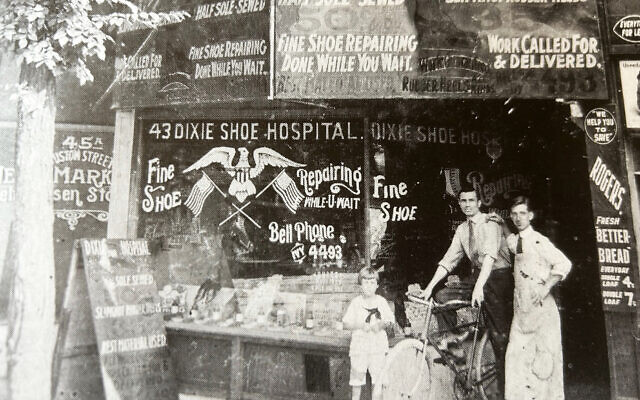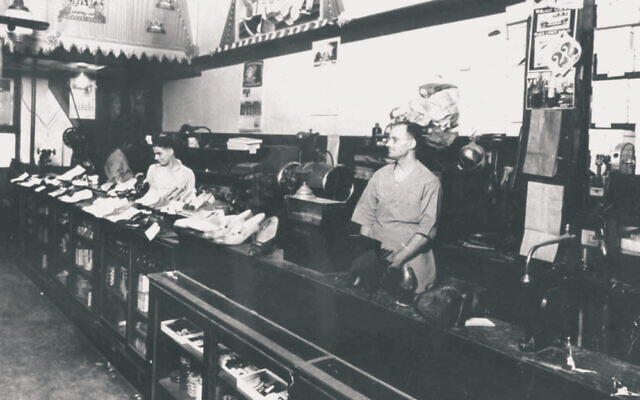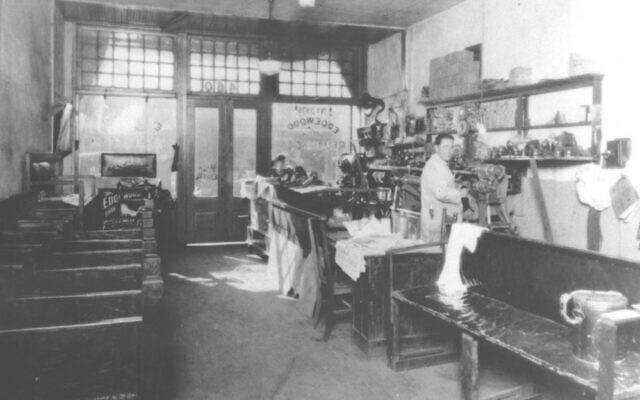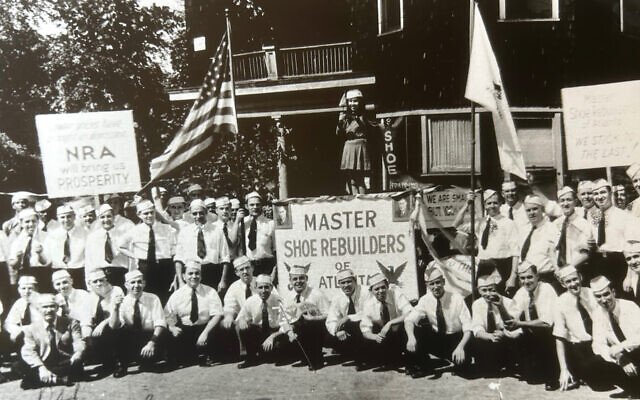Atlanta’s Sephardic Community Was Built on the Heels of Shoes
In the 1930s and 1940s, Sephardic-owned shoe repair shops dominated downtown Atlanta.
When the first Sephardic Jews came to America around the beginning of the 20th century, they took whatever jobs they could find. Many of them spoke only Ladino, a dialect of Spanish that is written with Hebrew characters, and had a limited education.
But some of those who came to Atlanta in those early years had worked as shoemakers, one of the trades Jews were permitted on the island of Rhodes which was a part of the Ottoman Empire of Turkey, where many of the immigrants were born.
While some started out as bootblacks, shining shoes for a few pennies, others worked to repair the heavy leather shoes that were worn then. They had a strong work ethic and as their English improved and they prospered, they opened their own small stores. By the early 1930s, two-thirds of the shoe stores in Atlanta, by one estimate, were owned by Sephardic Jews.

One of them was owned by Dan Maslia’s father, David, who was struggling in his shop to make a living during the height of the Great Depression in 1933 when Dan was born.
Dan Maslia says he literally grew up in the shop, shining shoes when he got older in what his father called, “The Shoe Hospital – making sick shoes well,” on Auburn Avenue.
It was just one of the many Sephardic shoe shops, Maslia says, that crowded the city’s shopping district. Most of them were simple shops crowded with merchandise and machinery. They were often no more than 15 to 20 feet wide and 30 to 40 feet deep. And, as Maslia recalled, they seemed to be everywhere.
“You could go downtown during the 1930s and 1940s and practically every block there was a shoe shop. Almost all of them run by Sephardic Jews. My dad was on Auburn Avenue and Lucky Street. But they were on Broad Street, all up and down Whitehall Street, Trinity Street, Mitchell Street. I don’t know how they all stayed in business.”

Most of them were just a short walk from where the Sephardic community lived just south of downtown Atlanta, near what is now the former Turner Field complex. In the days before air conditioning, on a hot summer night, the streets where they lived would come alive with conversations outside the closely spaced homes and apartments in the neighborhood.
“We would sit on our porches at night,” Maslia says. “The houses are so close together that you would talk to your neighbors, your Sephardic neighbors. Some lived across the street, others lived next door. And we’d go to each other’s houses. Maybe 60 percent of the houses on Pryor Street and on Central Ave were Sephardic. It was like it was a ghetto. It really was a ghetto. But everybody knew everybody.”
At the center of the community was the Orthodox Sephardic synagogue, Congregation Or Ve Shalom, which was founded in 1914. It was the hub of a closely knit community that rarely needed a formal invitation to a bar mitzvah or other important event. Everyone, says Maslia, just showed up at the synagogue.
But, by the 1950s, the synagogue, like most of the community, had moved on.
Today the synagogue, located on North Druid Hills in Brookhaven, still has a number of congregants from the original families, but it’s adding new members, including many who are not Sephardic from the neighborhood off I-85.

Few of the children of the initial wave of immigrants had any interest in shoes or shoe repairing. After the Second World War, when many of the younger generation finished their military service, they went to college on the GI Bill. After graduation, they had a professional career or were in business, where they prospered; Maslia worked for 40 years at Associated Credit Union, where he was the CEO when he retired.
Five years ago, he published Or Ve Shalom’s Founders Map project, a detailed description of his old neighborhood, which listed each home and each business, including the old shoe stores. He spent two years on the painstaking project, which has made a major contribution to the history of the Sephardic community in Atlanta.
One of the last links to that era, Bennies Shoes, which had its origins over a hundred years ago, just closed its doors on Piedmont Road at the end of September. Three generations of the Shemaria family had kept it going in a number of locations around the city.
Today, athletic footwear is what many people wear and they are rarely repaired. When they wear out, they are trashed. Today, Nike, the big footwear company, is building out a 16,000 square-foot product innovation center in the Star Metal Offices building on the West Side of Atlanta to sell even more of their popular shoes.




comments